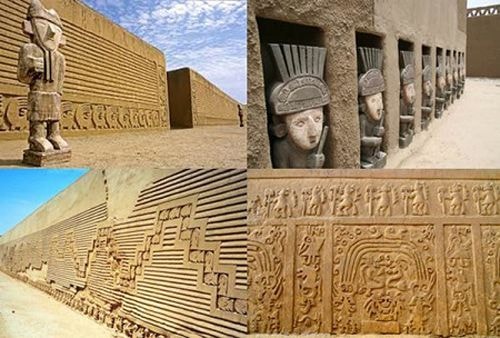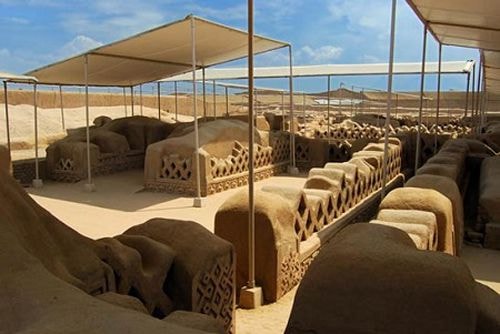Ancient city built from mud
Chan Chan was the capital of the Chimor kingdom in ancient Peru, with unique mud-built structures.
 |
| Wall decorations across the city. Photo: Planedia |
The Inca civilization was one of the most notable pre-Columbian civilizations to have existed in Peru. However, there were many other prominent civilizations before it, notably the civilization of the Chimor Kingdom.
According to Ancient Origins, this was the largest civilization in Peru before it was conquered by the Incas. The kingdom's capital, the city of Chan Chan, was one of the most impressive pre-Columbian cities in South America.
Chan Chan, which means Sun, is located about 5 km from Trujillo in northern Peru. The city was founded in 850 and was conquered by the Inca Empire in 1470.
Chan Chan was not only the capital of the kingdom of Chimor, but also the largest pre-Columbian city in South America. Its most notable feature was the world’s largest mud-brick complex. Chan Chan covered an area of about 20 square kilometers and had a population of about 100,000 at its peak in 1200. The entire city, from the most majestic temples to the humblest houses, was built of sun-dried mud bricks. The city walls were decorated with sculptures, reliefs, and carvings.
Chan Chan reflects the tight political and social structure of the Chimor kingdom. This is evident in the way the city was built. The city center consisted of nine rectangular blocks, or citadels, surrounded by high, thick earthen walls.
Within each citadel, buildings such as temples, houses, and storehouses were arranged in open spaces. Reservoirs and burial grounds were also built within the citadel. In addition to the nine main citadels, there were 32 other smaller-scale areas and four manufacturing areas with textile, ironwork, and woodworking activities.
The areas further north, east and west of the city were largely agricultural and traces of irrigation systems remain. This suggests that Chan Chan had a clear hierarchy. The central urban area was supplied with industrial products from the suburbs and agricultural products from more distant farming areas.
 |
The first European to arrive in Chan Chan was Francisco Pizarro, a Spanish conquistador. He and his men arrived around 1532. Since then, the city has been plundered by Spanish treasure hunters and "huaqueros" (grave robbers).
In Pizarro’s reports, Chan Chan’s walls and other structures were decorated with precious metals. Pedro Pizarro, one of Francisco’s relatives, found a silver-covered door that is estimated to be worth more than $2 million in today’s money. Archaeologists also found the world’s oldest telephone, a 1,200-year-old telephone, at Chan Chan.
The greatest threat to Chan Chan, however, is not treasure hunters, but the weather. Heavy rains, floods, and strong winds can liquefy the city’s dried mud structures. During the Chimor Kingdom’s existence, the El Niño phenomenon, which occurs in 25-50 year cycles, has caused the greatest damage to the city.
El Niño events, which are occurring more frequently due to climate change, threaten to destroy the remaining relics of this city. Many solutions have been proposed to protect the relics, such as using tents to protect them from the rain. Some decorative wall moldings have also been hardened with a solution of distilled water mixed with cactus resin, while others have been photographed and covered for protection.
According to VnExpress






